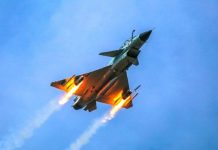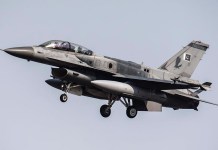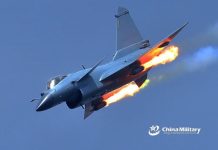A new report rang alarm bells for the US military’s tanker fleet, asking it to step up its capabilities in view of threats posed by arch-rivals — China and Russia.
In its report, US think tank Hudson Institute criticized the American military’s aerial refueling capabilities, saying that it has become “brittle and aged”. It further stated that lacking aerial refueling capabilities places the US at a higher risk in potential combat against its arch-rivals — China or Russia.
The report titled ‘Resilient Aerial Refueling: Safeguarding the U.S. Military’s Global Reach’, highlighted that enhancing the Pentagon’s aerial refueling capabilities needs to be a “top priority”. It also said that the Defense Department should set aside a budget of $6.3 billion throughout the next decade, for achieving these capabilities.
“Funding for these investments could be drawn from additional resources, other elements of the US Air Force budget, or if necessary, by reducing the procurement rate of KC-46A or Bridge Tankers.
Even if it comes at the expense of aircraft, improved surface architecture has the net effect of improving the tanker fleet’s effective offload capacity”, according to the report, which was shared with Breaking Defense prior to its publication.

“Given surface architecture deficiencies, additional aircraft investments without improving the surface architecture will yield little marginal benefits apart from creating a larger attrition reserve”, the authors wrote.
“In 2021, the U.S. aerial refueling enterprise is losing altitude”, said the report, which was released on November 15 and was written by Timothy Walton and Bryan Clark of the Institute’s Center for Defense Concepts and Technology.
Tankers are used to help during peaceful deployment as well as wartime operations around the world, ever since the Cold War ended around three decades ago, the report said.
As the military adopted an “expeditionary posture” when the deployment of forces became more frequent, its tanker inventory reduced from 701 aircraft to merely 473 aircraft. This further added stress on its existing tanker fleet.
Countering Chinese, Russian Threats
The Hudson Institute claimed, as this high pace of operations became the “new normal” for the tankers, its fleet was unable to indulge in any new operations or even respond to the threats posed by China or Russia.
“Without significant changes [the Defense Department] risks fielding air forces unable to conduct complex, distributed operations at scale”, the report explained. “During conflict, adversaries may be emboldened to exploit vulnerabilities in both the brittle aerial refueling architecture and U.S. operational plans more broadly. As the strength of the U.S. aerial refueling architecture becomes a weakness, U.S. military forces may be incapable of deterring or defeating aggression”, it added.
Another cause of concern for the military is the advancing age of its tankers. An average USAF tanker has a service life of approximately 52 years. The Air Force has also been delaying bringing in the newer KC-46 Pegasus tankers into service, which is further worsening this situation. This is because the older KC-10 Extender and the KC-135 Stratotanker aircraft are being retired before their successors are ready along with their crews.

The Air Force began its tanker recapitalization efforts in 2005 with a three-part program. The first part involved the Boeing KC-46A, which is currently in the process of being delivered to the US Air Force. The next element is the bridge tanker, which is going to involve a competition between an upgraded version of the KC-46A and Lockheed Martin’s next-generation tanker, which is based on the Airbus A330 aircraft.
While the Air Force has not revealed how many bridge tankers it plans to buy, RFIs (request for information) or proposals are expected by the year 2023. This tanker is not expected to join the Air Force until the 2030s.
The third stage is a future tanker, which the Air Force refers to as the ‘KC-Z’, and is going to follow the bridge tanker. The Hudson report renamed this aircraft as the ‘K-Z(M)’ as analysts said that this aircraft will not be carrying cargo (represented by “C”) and is going to be medium-sized (represented by ‘M’).
The report offered three acquisition plans to the US Air Force. The first plan shortens the duration of the bridge tanker program and extends the service life of the KC-135 tankers by another decade. “With this plan, the US Air Force can fund investments into the surface architecture and other areas such as C3 and tanker defenses. The lower KC-46A procurement rate in the 2020s also frees up funds to accelerate the [third stage] program”, according to the report.

The second and the third plan both include buying different numbers of the upgraded Boeing KC-46A or the Lockheed Martin bridge tanker offering.
“None of the plans prevent a 2020s drop in nominal offload capacity as KC-10s are retired, since bridge tankers and K-Z(M)s would not reach the force in mass until the early 2030s and late 2030s, respectively,” the report stated.
“However, if all three plans made the proposed investments in posture and bulk fuel distribution, employable tanker capacity in the Indo-Pacific could increase by 63% within a decade and approximately double by 2041”, it said.
The report also added that to make tanker operations more efficient and effective, the Air Force needs to focus on modernizing command, control and communication in its aerial refueling practices.
- Written by Kashish Tandon/EurAsian Times Desk
- Contact the author at: kashishtandon21@gmail.com
- Follow EurAsian Times on Google News




